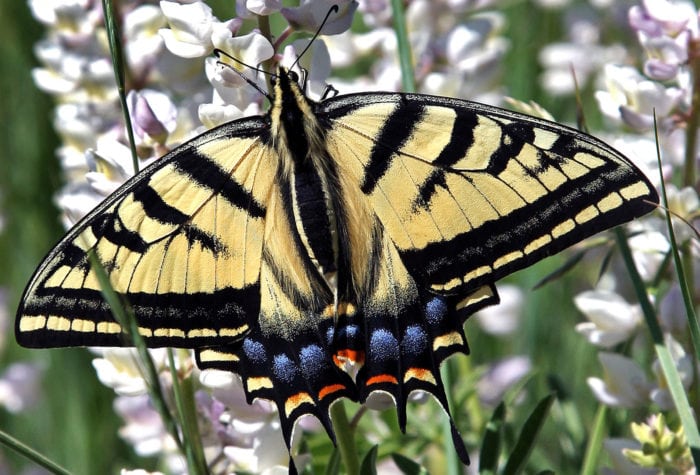The lagomorphs— rabbits, jackrabbits, hares and pika — are all active, foraging in grassy and brushy areas near thick cover, or, in the case of the pika, visiting their stored food piles they’ve stashed throughout their favored habitat among large rock piles. Beaver are now living off the hardwood sticks cached in the mud at the bottom of their pond, staying below the ice until the spring thaw. Mule deer and elk can be seen in the Malheur National Wildlife Refuge, and concentrated in places where snow cover is thinner with brushy or treed cover, and where water isn’t too far away. All mammals will be seeking out water sources — looking for a drink, but also prowling around for easy prey, since open water in winter is a rarity.
Coyotes and other predators spend their days now hunting for all those tasty mice, voles, gophers, and ground squirrels, often listening for them traveling along their runs and trackways through the grasses below the snow cover. Weasels, otters, and badgers can variously be spotted searching for, swimming after and digging up their favored “snacks.” Short-tailed and long-tailed weasels are busy investigating brush and rock piles, hunting for ground squirrels, mice, pack rats and pika. Otter hunt along and in the water all winter, and most of all the mustelid family, truly seem to love ice and snow.
Waterfowl concentrate in remaining areas of open water, such as where streams enter lakes and ponds, or springs keep leads of water open. Fishing birds such as herons and egrets, mergansers, grebes, goldeneye and scaup, bufflehead, and others can all be found in wetlands. In some areas you can find large flocks of geese, usually nearby grassy areas in which to forage. You can sometimes find swans, such as in the eddies and backwaters of the Deschutes River, and possibly even white pelicans at Malheur Wildlife Refuge or other big lakes. In open waters throughout the desert, waterfowl are fishing and foraging for any unfrozen aquatic plants and grasses, and songbirds are busily foraging for seeds and scavenging remains fruits and berries. Hawks, falcons, owls, and eagles can often be seen perched now, since circling the skies takes more energy, searching patiently for prey on and under the snow or looking for carrion. Eagles, often thought of as apex predators, actually eat quite a bit of carrion. In the case of bald eagles, fishing is much harder now so that often means eating dead waterfowl, and golden eagles will be on the lookout for deer and others killed by the cold, or the road.
The Earth’s perihelion, the point at which we are actually closest to the sun in our yearly orbit comes in early January. Despite what many think, winter is cold because we are pointing away from the sun, due to the relative “backward” 23-degree tilt of our planetary axis now, and not because we are farther from the sun. Early January also brings the Quadrantid meteor shower. The January full moon is often called the “Wolf Moon” across many northern cultures, because, ironically it’s a pretty good time for wolves (and our coyotes) to find food, as winter-killed animals increase in number.

